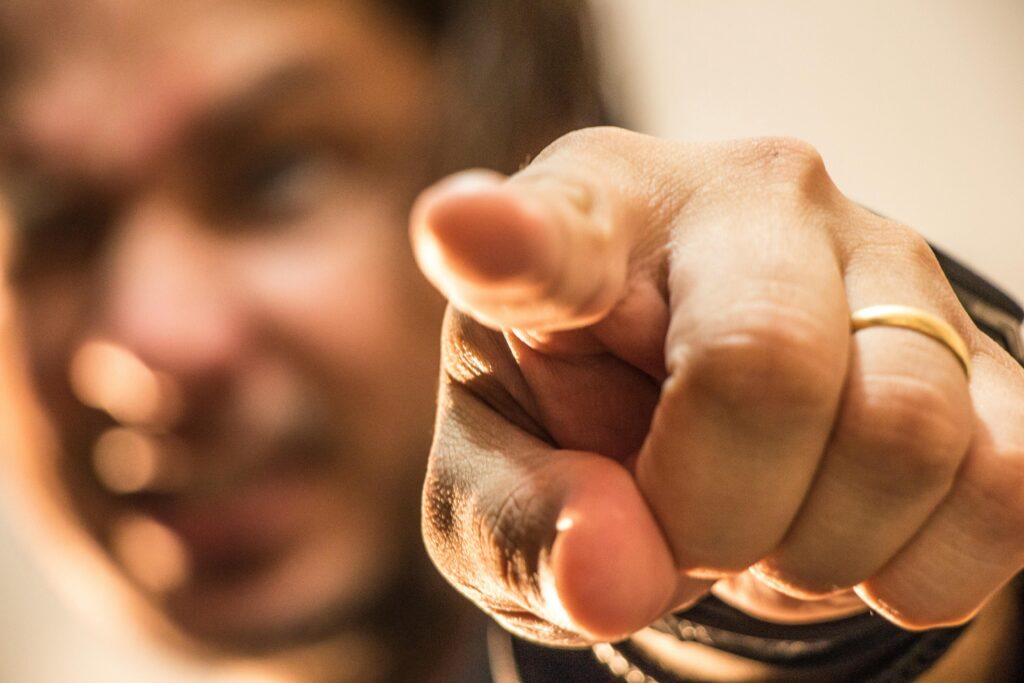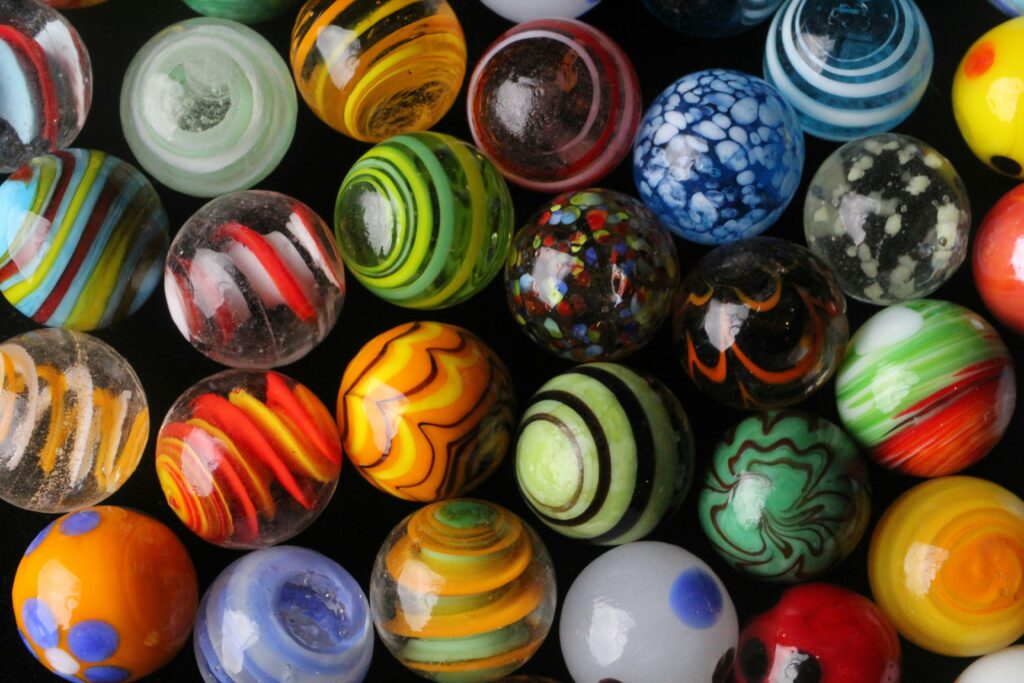
On shame, vulnerability and marble jars
Isaac Withers explains how reading Brené Brown, the story of the garden of Eden, and some ground rules for vulnerability helped him learn that guilt helps but shame doesn’t.
By session four of personal therapy, I had assessed that my therapist was good at his job and that I would ‘go for it’.
It took three sessions to try him out on some lighter material, to see if we ‘worked’ together. I was new to all this, only having ended up in therapy because I have to get 70 hours of personal therapy to become a counsellor. Anyway, I began to share the story of the hard year behind me, one that made the arrival of therapy in my life seem providential. I wasn’t going to be struggling for material after my 2024.
The next week, in trying to share the story in more detail with him, I found I had a strong emotional reaction and he suggested that I stop and notice what I was feeling.
I identified it as a kind of strong sadness. He proposed the word shame. I hadn’t used that word at all yet.
I shrugged this off and said I was very familiar with shame but didn’t think this was it. He asked me if I noticed what was happening in my body. I resisted, saying that nothing new was happening in my body, that I felt the same as I had done before he brought up shame.
Towards the end of that session, he told me that when I had talked about shame, I had fully turned my body away from him, towards the wall on my left. I remember smiling. It was true, I had done that. As much as I like to look around as I talk, I had totally redirected my body away from him. All the while, I was actively saying that nothing had changed.
In that moment, my body was acting more honestly than my mind. Shame had entered the room and had quickly come between me and my therapist.
This was a turning point for us. This blip in mind-body connection told me we had struck something big and he had named it accurately. I knew we were drawing something familiar and hidden out into the light.

We went on to explore shame more in future sessions, how it alienates us from others, cuts us off from our relationships and leads us to fear rejection from our tribe, often irrationally.
I asked him who was good on shame and he gave the name I had expected: Brené Brown. He assured me the hype was justified. I asked someone to gift me her book Daring Greatly for Christmas. Nothing like a shame theorist to brighten up your festive season. Here’s an attempt at sharing what I’ve learned since.
Separating shame from guilt
What is shame? I didn’t have a strong definition of shame when we first started batting it around in therapy. It was probably interchangeable with guilt and self-hate for me. The first thing that Brené Brown did for me was to draw shame apart from its siblings. In particular, she draws a sharp line between shame and guilt, which allows us to keep the good and know what to look out for. She writes:
“We often use the terms embarrassment, guilt, humiliation, and shame interchangeably.
“How we experience these different emotions comes down to self-talk. How do we talk to ourselves about what’s happening? The best place to start examining self-talk and untangling these four distinct emotions is with shame and guilt. The majority of shame researchers and clinicians agree that the difference between shame and guilt is best understood as the difference between ‘I am bad’ and ‘I did something bad.’”
She goes on to explain:
“Guilt = I did something bad.
Shame = I am bad.”
This distinction has been really helpful to me. I can try to catch my self-talk and name it. Interestingly, it’s also allowed me to make peace with guilt as something proactively helpful in my life. “I did something bad” is often objectively true, but it doesn’t have to lead to shame.
As a Catholic, one often hears about ‘Catholic guilt’ and, more broadly in society, we seem not to have a context for guilt, it’s in the pile of knotty and uncomfortable emotions we’re not sure what to do with. Brené Brown, it turns out, is pro-guilt. She sees it as a positive force for good.
“… let’s say that you forgot that you made plans to meet a friend at noon for lunch … If your self-talk is ‘I’m such an idiot. I’m a terrible friend and a total loser’ – that’s shame. If, on the other hand, your self-talk is ‘I can’t believe I did that. What a crappy thing to do’ – that’s guilt.

“Here’s what’s interesting… When we feel shame, we are most likely to protect ourselves by blaming something or someone, rationalizing our lapse, offering a disingenuous apology, or hiding out…
“When we apologize for something we’ve done, make amends, or change a behavior that doesn’t align with our values, guilt – not shame – is most often the driving force. We feel guilty when we hold up something we’ve done or failed to do against our values and find they don’t match up. It’s an uncomfortable feeling, but one that’s helpful. The psychological discomfort, something similar to cognitive dissonance, is what motivates meaningful change. Guilt is just as powerful as shame, but its influence is positive, while shame is destructive. In fact, in my research I found that shame corrodes the very part of us that believes we can change and do better.”
I think I always intuited this positive attitude towards guilt because the phrase ‘Catholic guilt’ has always grated on me. In my experience, my faith has been the catalyst to become the better version of me and the marker by which I can judge where I am on that journey. Guilt is a part of this, but a helpful part of it, which holds me to my values and reveals to me where the dissonance is.
Brown nails it: “We feel guilty when we hold up something we’ve done or failed to do against our values and find they don’t match up.” In fact, we Catholics even say those very words in the Mass, ‘for what I have done, for what I have failed to do’. The Sacrament of Confession is obviously then amazing for this – a pouring grace directly into these places. What a gift.
Shame, on the other hand, I conclude, really doesn’t have this positive dimension to it. Brown believes that shame is actively destructive.
“Shame is highly correlated with addiction, violence, aggression, depression, eating disorders, and bullying. Researchers don’t find shame correlated with positive outcomes at all … In fact, shame is much more likely to be the cause of destructive and hurtful behaviors than it is to be the solution.
“… [I]t is human nature to want to feel worthy of love and belonging. When we experience shame, we feel disconnected and desperate for worthiness … we are more likely to engage in self-destructive behaviors and to attack or shame others …. shame erodes our courage and fuels disengagement, and what we can do to cultivate cultures of worthiness, vulnerability, and shame resilience.”
Vulnerability, coming out of hiding
So what does any of this have to do with vulnerability?
In Brown’s words, shame often looks like ‘hiding out’, withdrawing from relationships, believing that if people knew what we were like – that ‘I am bad’ – they would reject us.
The biblical story of Adam and Eve is a great example of a shame story. After eating the fruit, doing the bad thing, we are told they hide from God.
“Then the man and his wife heard the sound of the Lord God as he was walking in the garden in the cool of the day, and they hid from the Lord God” (Genesis 3:8).
After this, Adam tries to displace blame, also a classic symptom of shame.

This movement to hide is its own kind of trap because we long for relationship, we are wired for it, with God and neighbor. By withdrawing the parts of ourselves that we are ashamed of from our relationships, we limit the ability of others to love us unconditionally.
In a word, this will require vulnerability.
Previously, the word vulnerability was a vague therapy-speak term to me that I had no connection to. Now, I see it as the key out of the shame trap. Brown talks of it this way.
“As I look back on what I’ve learned about shame, gender, and worthiness, the greatest lesson is this:
If we’re going to find our way out of shame and back to each other, vulnerability is the path and courage is the light.”
If shame is the movement away from the other into hiding, vulnerability is the movement out of hiding towards the other.
So, if it’s so important, let’s define the term. What is vulnerability? Brown defines vulnerability as, ‘uncertainty, risk, and emotional exposure’. She draws from the etymology.
“ … the word vulnerability is derived from the Latin word vulnerare, meaning ‘to wound.’ The definition includes ‘capable of being wounded’ and ‘open to attack or damage.’”
Why is vulnerability defined as risky? Because to be vulnerable with another is to trust they will still accept you, flaws and all. It offers them the opportunity to act unconditionally. But they might not always – this is the risk. And because it’s always a risk, it’s always courageous.
I’ve come to realize that I have admired vulnerability for years. I would hear public speakers talking pure theory and think, “but where’s the real stuff? Say something real, about you.”
It’s also what I have always loved about songwriters who were clearly drawing from their real, hard experiences. It’s what I loved about ‘DMCs’ (deep meaningful conversations) as a teen, then great group sessions on the Alpha Course – people sharing real things about their real lives.
And about my first experience of spiritual direction, now four years of spiritual accompaniment. And about anonymous addict groups, that allow entry to a circle of vulnerability via the thing an addict would feel shame about. Connection via shame. Genius. And any great conversations with friends that ‘go deep’. It’s all vulnerability. Sometimes we literally feel ourselves drop down into it as it deepens.
It’s also why I love poetry now. Other poets ‘going for it’ vulnerably has helped me. That’s why I write vulnerably too – what’s the point otherwise?
Say something real that only you could say. If anyone could say it, if it risks nothing, is it a good poem?
Brown notes how the arts and vulnerability relate in this way too – by being real in our creative expression, we risk rejection.
“To put our art, our writing, our photography, our ideas out into the world with no assurance of acceptance or appreciation – that’s also vulnerability.”
We risk this with our Substacks too… (like & subscribe… ).
Ground rules for vulnerability
So, is vulnerability always good in all contexts? Nope.
Ever heard a celebrity crying about their childhood on a podcast and thought, ‘something feels off about this?’ You’re not alone. I felt this way before I understood why.
So what are some good ground rules? Thankfully, Brené Brown has had a crack at this too.
“Vulnerability is based on mutuality and requires boundaries and trust. It’s not oversharing, it’s not purging, it’s not indiscriminate disclosure, and it’s not celebrity-style social media information dumps. Vulnerability is about sharing our feelings and our experiences with people who have earned the right to hear them.”
“People who have earned the right to hear them.” Amen. This is Brown’s criteria for what she shares in her public speaking.
“I don’t tell stories or share vulnerabilities with the public until I’ve worked through them with the people I love.
“First, I only share stories or experiences that I’ve worked through and feel that I can share from solid ground. I don’t share what I define as ‘intimate’ stories, nor do I share stories that are fresh wounds …
“Second, I follow the rule that I learned in my graduate social work training. Sharing yourself to teach or move a process forward can be healthy and effective, but disclosing information as a way to work through your personal stuff is inappropriate and unethical.
“Last, I only share when I have no unmet needs that I’m trying to fill. I firmly believe that being vulnerable with a larger audience is only a good idea if the healing is tied to the sharing, not to the expectations I might have for the response I get.”
Marble jar friends
An image that really stayed with me from the book was the image of the marble jar.

Brené Brown tells the story of her daughter Ellen’s first betrayal by her elementary school friends. She had shared a secret with these two friends and they had told her whole class. When she came home, she told her mum she was never going to tell anyone anything ever again. Searching for a way to explain to her daughter that she shouldn’t shut down forever, Brown reached for an image her daughter could understand, her teacher’s marble jar.
“Ellen’s teacher … kept a bag of colored marbles next to the jar, and whenever the class was collectively making good choices, she would throw some marbles into the jar. Whenever the class was acting out … the teacher would take marbles out of the jar.
“… I told Ellen to think about her friendships as marble jars. Whenever someone supports you, or is kind to you, or sticks up for you, or honors what you share with them as private, you put marbles in the jar. When people are mean, or disrespectful, or share your secrets, marbles come out. When I asked her if it made sense, she nodded her head with excitement and said, ‘I’ve got marble jar friends!’
“… When I asked her how her marble jar friends became marble jar friends, she thought about it for a minute and replied, ‘I’m not sure. How did your marble jar friends get their marbles?’ After thinking about it for a while, we both started blurting out our answers. Some of hers were:
They keep our secrets.
They tell us their secrets.
They remember my birthday!
… Trust is built one marble at a time.”
Marble jar friends are those who have earned our trust and they deserve our vulnerability.
Who are your marble jar friends?
Offering tours
One of my marble jar friends is a housemate. We talk a lot and near the close of the year, I began to refer back to 2024 as a bad year. He told me he was surprised by this and said something along the lines of, “I live with you and I didn’t know you were having a bad year.”
This was a wake-up call for me. It showed me how good I was at seeming ok, even when I was just coping.
This has now largely shaped my therapeutic journey – the desire to move from shame to vulnerability – to hide less and show up more.
My therapist now sits next to a high marble jar. I’ve let him in to a lot and it’s really had a ripple effect on my other relationships, outside of the room.
Our conversations have helped me to notice when a marble jar friend offers me an opportunity to be vulnerable. I don’t see this as indulgent anymore. When someone close asks me how I’m doing now, I see the opportunity to say something more real and I try to. Often, this is me sharing what I’m stressed about or what I’m worried about or, if we have more time, how my year went. It’s an attempt.
Unexpectedly, this has often caused them to do the same. I didn’t expect this. It’s like creating a new norm in a relationship, modelling a new behavior. “If I can do this, you can do this too.” Even just a bit. Marble by marble, our relationships become a little more real than they were before.
One day, when I’ve run it by those who love me, I’m going to find a way to share more about what I came to refer to as the bad year. I know that I’m being nudged to. But I’ll run it by my high marble jar friends first and then probably write about it here. It’s not all bad actually, it was the context for a massive moment of grace and a deeper understanding of hope.
Maybe 18 sessions in, my therapist and I started to talk about reviewing our journey. I asked him what he had made of it and he said it was as though I was mapping terrain ahead of us and slowly showing him.
This really got me, because midway I had written a poem about this journey called ‘The First House Tour’. We acknowledged that we had some kind of synergy here, a very similar image. The poem was about how I was taking a risk with him, showing him around what I was not proud of, trying to move towards a more vulnerable way of being. I think it’s where this piece should end.
Stay free, friends.
The First House Tour
I got good at covering the tracks
to my hiding place.
I sweep the snow on return journeys
back from the house of requirement.
These days I am bringing another
and for the first time offering tours.
We go room by room at my pace.
He is helping me to name them more accurately.
I can hide from essays here.
Or from crackling things.
Or from time passing and from growing older.
I click a pocket watch and hit pause on it all.
But I am done with hiding,
hence the tours I am offering.
My first guest does not judge
how little light gets in
nor the janky-armed sofa,
nor the dust it catches.
He just wills me on,
partners with my restoration.
I would like to have the whole tribe over one day
and new loves too.
Maybe some will join the project
like how my Dad could not abide
the squeaky hinges in my uni house.
His love is a doing word.
With all this, I won’t have tracks left to cover,
they’ll be lost in the slush my guests turf up.
Then I’ll have to bring that wolf in too.
We named him shame, by the way.
This is a slightly edited version of an article which first appeared on Isaac Withers’ Substack page the fruitfulness project, https://isaacwithers.substack.com/ It is republished here with the author’s permission.
Like what you’ve read? Consider supporting the work of Adamah by making a donation and help us keep exploring life’s big (and not so big) issues!
Isaac Withers
Isaac Withers is Creative Director at St Peter's House (http://peters-house.com/). He studied English Literature and Creative Writing and is most interested in how to live a fruitful life. To this end he runs The Fruitfulness Project: https://substack.com/@isaacwithers

